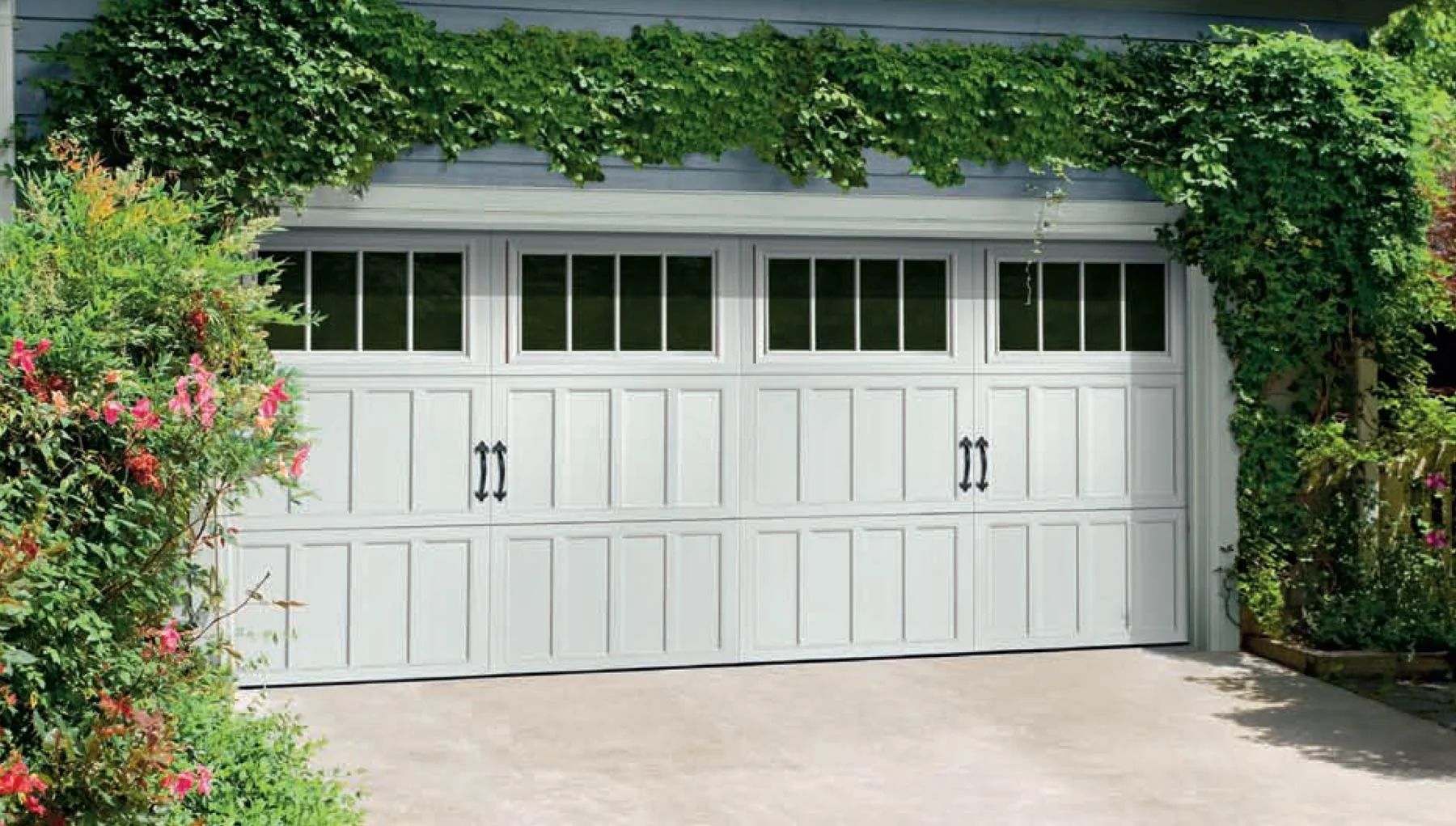Living in Sydney’s Northern Beaches area? In that case, you know that the weather can be unpredictable, with occasional storms, heavy rainfall, and temperature drops during the winter months. With these weather conditions in mind, properly caring for your garage door is essential to prevent any damage or malfunction during winter.
However, with proper care and maintenance, your garage door can remain in excellent condition throughout the year.
This article will provide all the necessary information on winter garage door maintenance, including lubrication of components and inspection of weatherstripping.
Our team of experts at Pittwater Garage Doors is here to assist you in ensuring your garage door remains in top condition.
Table of Contents
How Does Winter Affect the Garage Doors?
Colder temperatures can enormously affect garage doors, leading to various issues that compromise performance and lifespan. Here are a few ways in which colder climates affect garage doors:
Contraction and Expansion of Components: Under colder conditions, metal components of garage doors like springs, tracks and rollers may contract due to lower temperatures; this can make the door operation less smooth or damage its components. Once temperatures increase again, however, these same parts can expand again, leading to misalignment or binding issues in their operation.
Issues with Weatherstripping: Weatherstripping, the rubber seal at the bottom of garage doors that keeps out cold air and rain from entering, can become brittle and crack during freezing temperatures – leading to gaps that allow air and moisture to enter into your garage space. This poses serious problems when leaving garages open during cold spells.
Malfunction of Garage Door Opener: Cold weather can also play a part in the malfunctioning of garage door openers, making opening and closing more challenging than before. Low temperatures cause the lubricant within to thicken, making it harder for it to move the garage door smoothly.
Component Freezing: When exposed to frigid temperatures, components of garage doors may freeze, rendering them inoperable and leading to expensive repairs. Frozen parts could also cause irreparable damage that necessitates costly replacement costs.
7 Tips to Maintain Garage Door in Winter
To prevent these issues and keep your garage door functioning correctly during the colder months, it’s essential to perform regular maintenance. Here are some tips to help you maintain your garage door during winter
1. Lubricating Garage Door Components
Lubricating garage door components is the first step toward keeping them in great shape for winter, helping protect them against harsh weather conditions and keeping your garage door functioning optimally.
Clean garage door components. They must be thoroughly cleaned before applying lubricant to any components on a garage door system. Use mild detergent and warm water to scrub down each piece to remove dirt or debris accumulated on its details before applying lubricant.
Determine which garage door components need lubrication. Lubricate the rollers, hinges, tracks and springs, as these components are essential to the smooth functioning of a garage door. Lubricating them helps reduce wear and tear while increasing their lifespan.
Choose an Appropriate Lubricant The type of lubricant used during lubrication is vital in its own right. Silicone-based oil is generally recommended due to its being waterproof and suitable for harsh winter conditions; oil-based lubricants tend to attract dirt and debris more readily.
Apply Lubricant. Using a clean cloth, evenly apply lubricant to rollers, hinges, tracks, and springs with rollers and hinges and tracks and springs using roller lube – taking care not to over-saturate components with oil.
2. Examining Garage Door Weatherstripping
Weatherstripping is the rubber seal at the base of your garage door that helps seal out cold air and rain from entering. Regular inspection of weatherstripping is essential to ensure its condition.
Look for Signs of Wear and Tear When inspecting weatherstripping, the first step should be locating signs of wear and tear, such as cracks, tears and gaps in its composition. If any such indications arise, then replacing them should become the priority.
Clean weatherstripping using mild detergent and warm water, and thoroughly scrub the weatherstripping to eliminate any dirt or debris accumulation on its surface. This step should help restore its look and help ensure the optimum performance of its functions.
If any wear and tear or misalignment of weatherstripping become noticeable, replacing it may be necessary to restore optimal garage door operation. Be sure to opt for weatherstripping specifically designed to withstand harsh winter conditions when making this decision.
3. Checking Garage Door Springs
Garage door springs are an integral component of every garage door system.
Your garage door springs are integral to its operation and are responsible for smoothly lifting and lowering it. However, they can contract during cold temperatures, malfunctioning the garage door.
The first step to inspecting garage door springs is identifying signs of wear and tear, such as cracks, rusting or wear. If any signs exist on any spring, it may be time for replacements.
Assess Spring Tension Springs under tension, meaning they should be tightly wound. To check their tension manually, lifting half of the door without using an opener will allow you to test their pressure accurately; if it stays put while lifted manually, then that indicates appropriate tension; otherwise, it would suggest loose pressure; should it fall away, then that would mean too little stress while rising might mean too much.
After checking spring tension, lubrication is vital to ensure smooth operation over winter. Use silicone-based lubricant liberally on all springs.
If your springs show any wear and tear or have incorrect tension settings, they should be replaced. For safety purposes, it is advised that professional services assist in replacing these springs, as this task could prove dangerous.
4. Clean Your Garage Door
Cleaning the garage door regularly during winter maintenance is crucial to its durability. When it comes to garage door cleaning products, selecting the appropriate solution is vital. Avoid harsh abrasive cleaners like bleach cleaners that could harm the garage door’s finish; use mild detergent and warm water instead.
Using a soft cloth or sponge, carefully clean all areas of the garage door, including its corners and edges, using warm water and dry it using another clean cloth. Rinse with clean water after each cycle and let air dry thoroughly before opening or closing with another piece of furniture or closing the door/opening the lid as usual.
Wax the Garage Door. Once your garage door has been cleaned, it’s advisable to wax it to protect it against harsh winter conditions. For this purpose, use an approved polish explicitly designed for garage doors and apply evenly using a soft cloth.
5. Checking Out the Garage Door Opener
Your garage door opener is an essential component of your garage, responsible for opening and closing it smoothly. In wintertime, cold temperatures may cause it to malfunction resulting in a damaged door requiring you to adjust its opening mechanism yourself.
Unplug Your Garage Door Opener. Before beginning testing, disconnect the garage door opener from its power source to prevent it from opening or closing during this process. Manually Open and Close the Door If any resistance or difficulty in the gap or closing your door occurs, seek professional help immediately.
Test Your Garage Door Opener. To test the opener, connect it to a power source and open and close the door using a remote or wall switch. If the door moves smoothly without resistance, the opener should work effectively; otherwise, it might require professional assistance. If any problems arise, seek help immediately from a professional.
Our Garage Door Services Include
- Garage Door Repairs
- Garage Door Installation
- Garage Door Automation
- Garage Door Servicing
- Garage Motor Replacement
6. Seal Cracks and Gaps
In wintertime, cold air can enter your garage through gaps and cracks in its door. Sealing these areas will keep them warm while protecting their components from damage.
Use a caulking gun and weatherstripping to seal gaps or cracks around the garage door, helping reduce energy bills and making your space more comfortable during winter.
7. Install Insulation
If your garage isn’t insulated, consider adding insulation to keep temperatures warmer during winter. Insulation will also help protect door components by lessening their impact from low temperatures.
Foam board and reflective insulation may be suitable options for garage doors. Consult a professional to help identify the most effective type of insulation.
Clean your garage door regularly to prevent dirt and debris from building up and damaging its components. Use mild detergent mixed with warm water for effective results, and thoroughly rinse after each clean-up session.
Maintaining the cleanliness of your garage door can not only prevent damage but can also enhance its appearance and extend its lifespan.
Conclusion
Garage door maintenance is critical to ensuring its optimal yearly performance. Failing to do so could result in costly repairs, inconvenience and potential safety hazards if neglected.
Lubricating and inspecting your garage door regularly is one of the best ways to combat wear and tear, prolong its lifespan, and save you money in the long run. Cleaning keeps it looking its best while protecting it against dirt and debris buildup.
Keep your garage door functioning perfectly by taking proactive steps now. With these tips and the help of a professional, you can rest easy knowing your garage door will remain in excellent condition for longer.


